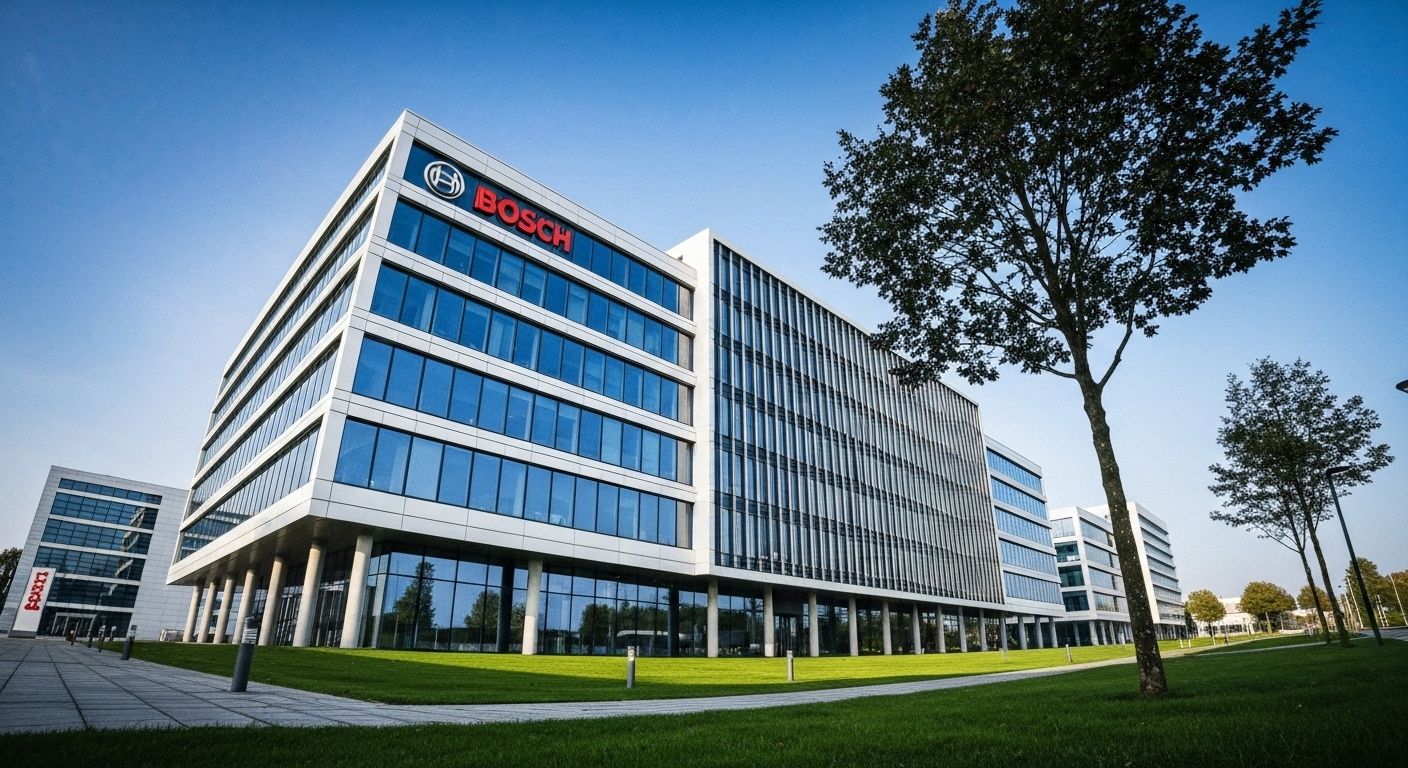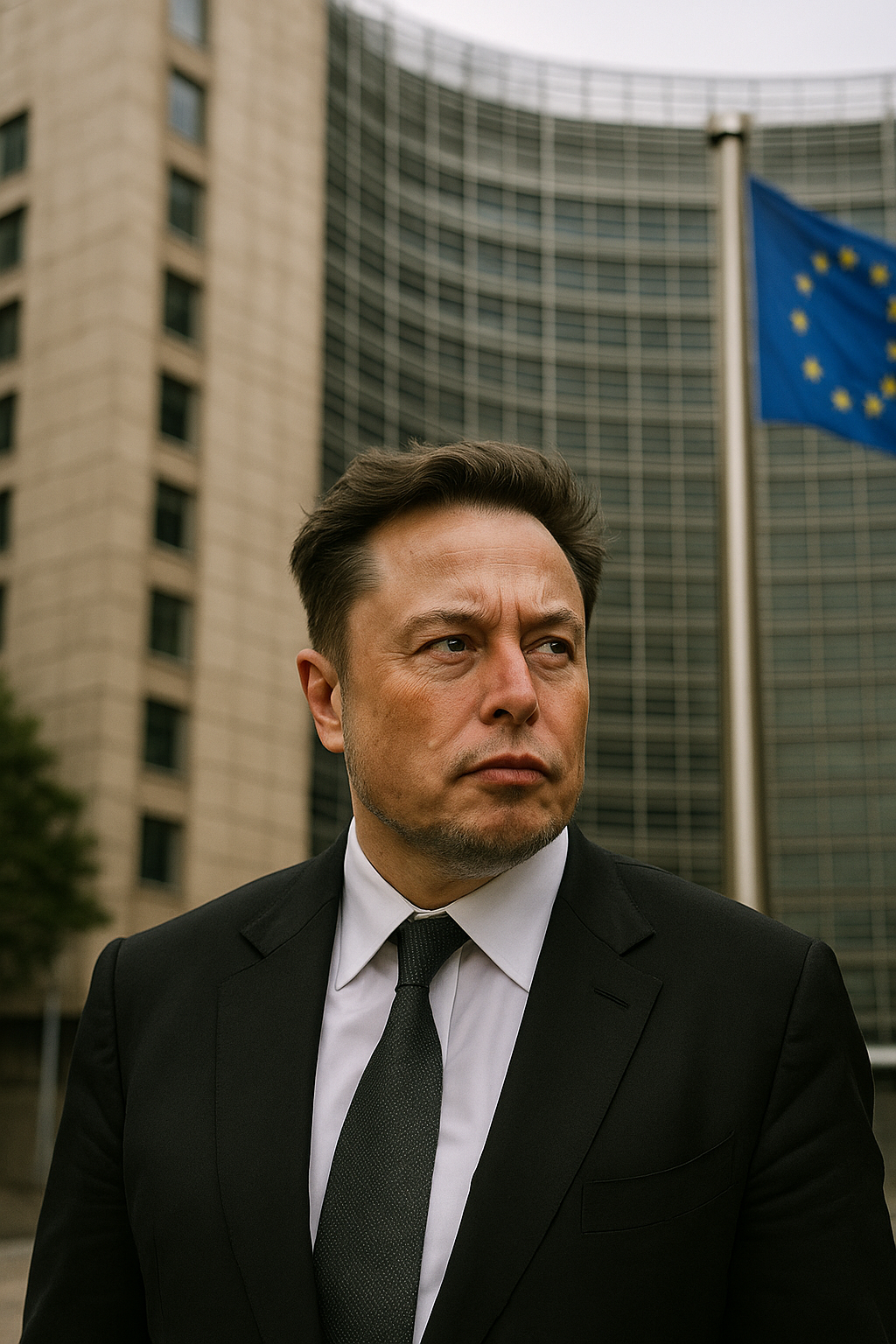Key Highlights
Here’s a quick look at the significant developments regarding Bosch’s recent announcement:
- Bosch is set to reduce its workforce by 13,000 jobs, primarily within its mobility division in Germany.
- The company aims to close a €2.5 billion annual cost gap in its auto business.
- Intensifying global competition, especially from rivals like Tesla and China’s BYD, is a major factor.
- The slower-than-expected adoption of electric vehicles has led to overcapacity.
- These job cuts are part of a broader strategy to improve competitiveness within the German auto industry.
- The reductions will affect roles in administration, sales, development, and production at key German sites.
Introduction
Bosch, the German industrial giant Bosch has announced plans to cut 13,000 jobs, a significant move that highlights the mounting pressures on the global auto industry. These reductions, concentrated within Germany, are a response to a challenging market, including a slower-than-anticipated shift to electric vehicles and stiff competition. This decision reflects a critical moment for Bosch as it navigates structural changes to maintain its footing in the rapidly evolving mobility sector. What does this mean for the future of the company and the wider German automotive landscape?
Key Reasons Behind Bosch’s 13,000 Job Cuts
Why is a major company like Bosch making such drastic workforce reductions? The decision stems from a combination of severe market pressures and a significant annual cost gap of around €2.5 billion in its mobility business. The company is facing a perfect storm of slowing demand, high production costs, and fierce global competition, making it impossible to maintain its current headcount.
These challenges are compounded by the slow market penetration of new technologies like electric vehicles and hydrogen. To secure its long-term competitiveness, Bosch has stated that these job cuts, while difficult, are an unavoidable step. The following sections will explore these reasons in greater detail.
Intensifying Global Competition and Market Pressures
The global vehicle market is experiencing a period of subdued development, creating a tough environment for suppliers like Bosch. The company is grappling with intense competition from established players and aggressive newcomers, particularly from China and the U.S. This has put significant pressure on pricing and margins across the entire automotive industry, affecting both carmakers and their suppliers.
This competitive landscape has directly contributed to the annual cost gap Bosch is trying to close. Markus Heyn, chairman of the Mobility business sector, noted, “We can expect to face even more intense competition.” This reality forces the company to re-evaluate its cost structures to remain viable.
The situation is especially acute in Europe’s biggest economy, where high labor and energy costs add to the burden. The need to finance substantial investments in future technologies from its own resources, while sales are shifting to regions outside Europe, makes cost reduction an urgent priority for the company’s survival and growth.
Impact of Tariffs and Shifting Industry Regulations
Beyond market competition, geopolitical factors and trade policies have created considerable uncertainty. Trade barriers, such as the 15% tariff imposed on EU exports to the U.S., have added to the financial strain on Bosch. These tariffs, while lower than those on some other countries, contribute to the high additional costs that make it difficult for the company to sustain its workforce.
The regulatory environment has also played a role. Bosch points to the lack of a clear regulatory framework as a factor holding back the development of new technologies like hydrogen. This delay, coupled with the slow ramp-up of the hydrogen market in Europe, has resulted in underutilized production capacity for related products.
These industry regulations and geopolitical developments have accelerated the German auto industry’s decline from its once-dominant position. As the global economic landscape shifts, companies like Bosch must adapt to a new reality where local production for local markets becomes increasingly important, challenging the traditional export-heavy model.
Timeline and Scope of the Planned Layoffs
Bosch has outlined a multi-year plan for its workforce reduction, with the job cuts scheduled to extend until the end of 2030. The company has already started discussions with employee representatives to manage the process. The timeline varies depending on the specific location and division affected by the restructuring.
The layoffs will be concentrated at Bosch’s mobility locations in Germany, particularly in the greater Stuttgart area and other key sites. The specific facilities targeted for these adjustments include Feuerbach, Schwieberdingen, Waiblingen, Bühl, and Homburg. The following sections provide a more detailed breakdown of the schedule and the roles impacted.
Schedule for Job Reductions Across Major Facilities
The company has detailed a phased approach to the job cuts across several of its major German facilities, with the adjustments planned to conclude by the end of 2030. This long-term timeline reflects the deep structural changes Bosch is undertaking to align its operations with changing market demands, such as the decline in diesel vehicle production and the slow adoption of hydrogen technology.
At the Waiblingen location, for instance, the company plans a complete phase-out of its connector technology production by the end of 2028. This specific timeline is due to the plant’s declining production volumes and loss of competitiveness over several years. The adjustments at other sites are similarly tied to strategic consolidations and responses to market shifts.
Here is a breakdown of the planned job reductions by location:
| Location | Number of Job Cuts | Completion Deadline |
|---|---|---|
| Feuerbach | 3,500 | End of 2030 |
| Schwieberdingen | 1,750 | End of 2030 |
| Bühl/Bühlertal | 1,550 | End of 2030 |
| Homburg | 1,250 | End of 2030 |
| Waiblingen | 560 | End of 2028 |
Divisions and Roles Most Affected
The job cuts at Bosch are not across the board; they are strategically targeted at specific divisions and functions within the Mobility business sector. The Power Solutions and Electrified Motion divisions are among the most significantly impacted. These divisions are at the forefront of the industry’s transition, facing challenges from the decline of traditional combustion engines and the slower-than-expected growth in new areas like electric drives.
This restructuring affects a wide range of roles, from the factory floor to corporate offices. The goal is to reduce overcapacity in areas where demand has fallen sharply. The roles most affected by the cuts include:
- Development
- Sales
- Administration
- Purchasing
- Production
Furthermore, the operational activities within these divisions will see major changes. For example, the Homburg facility will consolidate the Power Solutions division’s activities, while the Feuerbach plant is impacted by low demand for both diesel components and hydrogen technology products. These moves are designed to create a leaner, more agile organization.
Strategic Cost-Saving Measures Beyond Workforce Reduction
While the 13,000 job cuts are a major part of Bosch’s plan to close its €2.5 billion cost gap, they are not the only measure being taken. The company is looking at every aspect of its operations to find efficiencies and reduce expenses. This comprehensive approach involves using all available levers to lower costs at every level as quickly as possible.
These cost-saving measures include streamlining logistics, reducing investments in production facilities and buildings, and cutting material costs. The company is turning to technology, including automation and artificial intelligence, to drive productivity gains and secure its long-term competitiveness. The following sections will examine how these strategies are being implemented.
Streamlining Operations and Adopting Automation
To enhance its competitiveness, Bosch is focused on streamlining operations and increasing efficiency. This involves making logistics and global supply chains more efficient to reduce overheads. By consolidating activities, as planned for the Power Solutions division in Homburg, the company aims to leverage synergies and create leaner structures that can better respond to market changes.
A key part of this strategy is the adoption of automation. By automating certain processes in manufacturing and engineering, Bosch can achieve significant productivity gains. This is one of the many levers the company is using to permanently reduce its costs and position itself to compete in a tough global market.
The primary goals of these measures are to:
- Increase productivity through automation.
- Make logistics and supply chains more efficient.
- Reduce material and equipment costs.
- Consolidate operational activities to leverage synergies.
Investments in Artificial Intelligence and Digital Transformation
Alongside cost-cutting, Bosch is making substantial investments in its future, particularly in artificial intelligence (AI) and digital transformation. The company sees great potential in using AI to boost productivity in both manufacturing and engineering. This focus on new technologies is crucial for financing its transformation largely from its own resources.
Bosch is leveraging its deep expertise in sensor technology, software, and services to create innovative, user-friendly products. By integrating AI and connectivity, the company aims to develop cross-domain solutions from a single source. This digital shift is not just about improving efficiency; it’s about reshaping the business to lead in areas like automation, electrification, and digitalization.
This investment in AI is directly linked to its restructuring efforts. By automating tasks and using AI to optimize processes, Bosch can operate with a leaner workforce while enhancing its innovative strength. This allows the company to secure its competitiveness and viability in a market that is increasingly driven by software and advanced technology.
Conclusion
In summary, Bosch’s decision to cut 13,000 jobs is a response to the mounting pressures of global competition and regulatory shifts. As the company adapts to an evolving market landscape, it’s clear that strategic cost-saving measures will play a crucial role in its future sustainability. While these layoffs may be challenging for those affected, Bosch’s focus on streamlining operations and investing in automation and AI signifies a shift towards innovation and efficiency. Staying informed about such industry changes is essential for understanding the broader implications for both employees and consumers. If you have any thoughts or insights to share on this topic, feel free to join the conversation!




